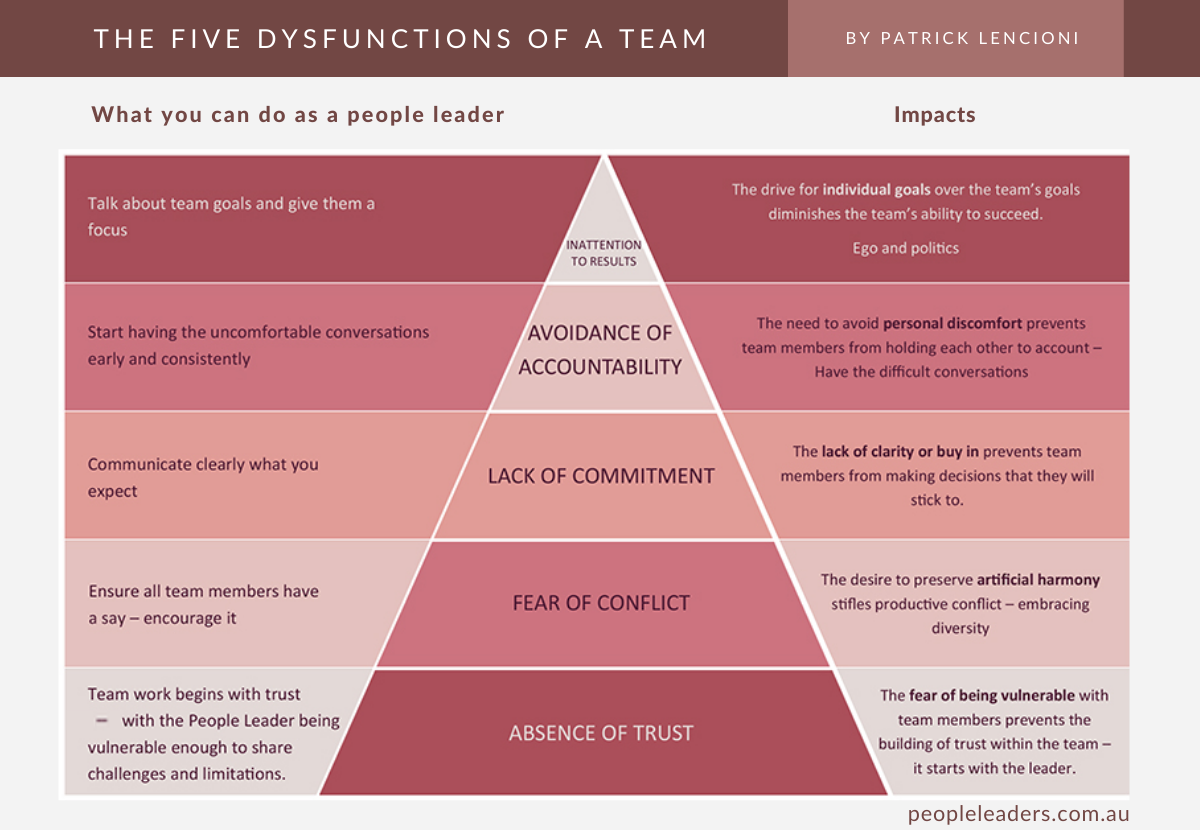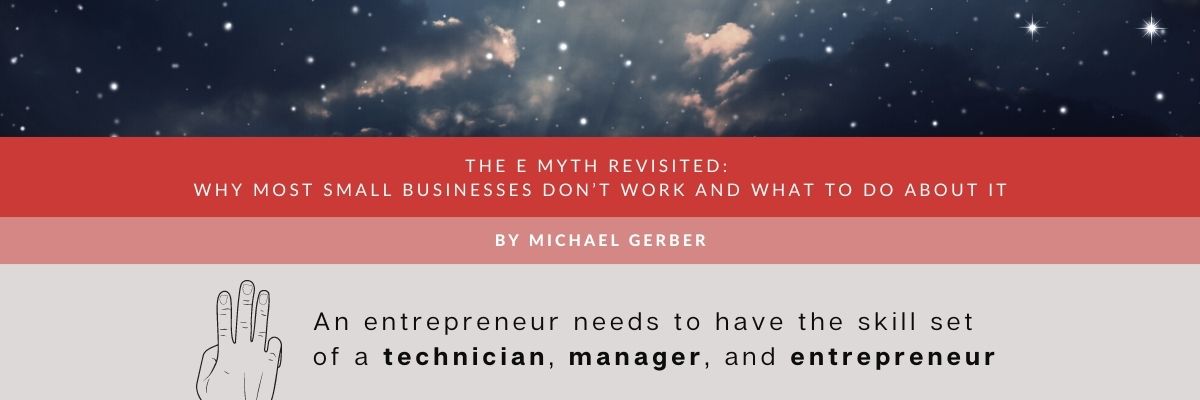I am Trevor McCandless, CEO of Fusion CPA. If you talk to the people who know me the best, they will tell you I am an avid reader. Taking golden nuggets from some of the best business books of all time has made our small business successful. From The 80/20 Principle, The Five Dysfunctions of a Team, and The E Myth Revisited to steady favorites like Topgrading, Rich Dad, Poor Dad, The Profit First Method and Predictable Revenue. I feel that there is power in learning from those who came before you. These books have given me the tools I need to keep scaling Fusion CPA, as well as our clients’ companies. In January 2021, it will be 10 years since Fusion CPA opened its doors. We have learned valuable lessons on our journey so far and have garnered perspective with time. Dig into the summaries below to apply these winning principles to your business.
Table of Contents
The 80/20 Principle
I want to start my summaries of the best business books of all time with the book that has had a powerful influence on me personally in how I live my life and how I go about business. I see it as one of the best business books of all time. Richard Koch has authored or co-authored over 20 books that discuss business and personal success. In this book, Richard offers a reinterpretation of the “Pareto Rule” and how it applies to business. The heart of the Pareto Rule is that the most results come from the minority of effort in life, in career, and in business. Richard originally wrote the book in 1997. However, a major update was released in 2007. The 80/20 Principle made GQ’s list of the top 25 business books of all time. read more Richard has the mentality that success is not based on planning but on creating a philosophy or attitude that works for the individual. From there, a person can stumble across shortcuts or strategies that lead to success. Events create opportunities that allow people with the right mindset to succeed where other individuals who have equal or greater talent fail.
Understanding The 80/20 Principle
The basic premise of this book is that 80 percent of the results and consequences in life or business come from 20 percent of its input, efforts, and causes. This book shows how businesses can achieve more results with less effort. The ratio is not always 80:20. It could be 90:10 or 60:40. The idea is that there is not a linear relationship between what an organization puts into something and what it gets out. There’s not a linear relationship between cause and consequences. This is something that I’ve seen over the past 10 years with Fusion CPA. Around 20 percent of our customers garner us 80 percent of our profits and revenues.
Applying The 80/20 Principle To Business
The 80/20 rule means that, in life and in business, we are surrounded by inefficiency. You need to identify your top 20 percent versus your bottom 20 percent. This is done by taking a more intuitive approach to how you run your business. 1. Create a hypothesis and then test it by looking at two sets of data. For example, select 100 customers and identify how much revenue you make from them each year. Organize the data in descending order to find out what percentage of your customers represent most of your revenue. You probably will find that between 15 and 30 percent of your customers represent 90 percent of your revenue. 2. The 80/20 rule also requires you to adjust your thinking. And then to take action based on efficiency. Based on the theory Richard Koch proposes, your business may want to:
- Move more of its resources to the customers that are producing revenue and less time and resources on the 80 percent that are unproductive.
- Examine that underperforming 80 percent and make those clients more productive or make those clients more effective.
In Businesses:
- 20 percent of market players will garner 80 percent of the profits.
- 80 percent of your profits will be created by 20 percent of the market, customers, employees, or products.
- 20 percent of employee activity will create 80 percent of employee value.
In Life:
- 20 percent of our efforts will make 80 percent of our achievements.
- 20 percent of life experiences make up 80 percent of our happiness.
Key Takeaways From The 80/20 Principle
In his book, Richard Koch focuses on being selective with our efforts.
- Trying to work hard in every area won’t garner the desired results. Instead, identify the few things that are the most important and direct your energy there. The rest should be removed or outsourced.
- Linear relationships do not always exist. Think about nonlinear connections that can allow you to use the least amount of effort for maximum results. Go beyond the surface when identifying why you are getting excellent results or poor results in a certain area.
- Luck and success do not go hand-in-hand. If something goes well or something goes bad, there were hidden influences at work. Identify what you can control and build on them going forward.
The Five Dysfunctions Of A Team
The second book on my list of the best business books of all time is The Five Dysfunctions of a Team, by Patrick Lencioni, who is the author of 11 books. They have been translated in to 30 languages and have sold six million copies. Patrick is currently the president of the Table Group. He spends his time writing and speaking about leadership, organizational health, and teamwork. His vision has made him a consulting guru with executives and their teams. In this The Five Dysfunctions of a Team summary, I would like to highlight some gems I gleaned from this leadership fable about a tech company fighting to grow its customer base.
The Five Dysfunctions Of A Team Pyramid
Review this Five Dysfunctions of a Team pyramid and see where adjustments may be needed in your business and how to approach these changes. You can download the Five Dysfunctions of a Team PDF, include the pyramid graphic, below. 
Understanding the Five Dysfunctions of a Team – A Summary PDF
In his book, Patrick explains how dysfunctions leads to more dysfunction, which can destroy the morale of the team. He does this using a pyramid of dysfunction that includes five layers. After reading this The Five Dysfunctions of a Team pyramid, your team may benefit from downloading The Five Dysfunctions of a Team PDF that I’ve included here that goes into more detail. Download The Five Dysfunctions of a Team Summary PDF 
Topgrading
A book that has helped our organization improve its hiring success rates is Topgrading, by Bradford D. Smart. Bradford’s book is based on the theory that a company’s success or failure depends on the talent they hire. The higher the performers a team has, the more successful the organization will be. Of course, as we have seen and from personal experience, this is easier said than done. In fact, research shows that only one out of four new hires will be a top performer. Realizing this, it became important for our business to streamline the hiring process. This saves a lot of time and money and makes Topgrading one of the best business books of all time.
About the Author
Bradford D. Smart is the CEO and founder of Topgrading. His business is helping companies improve profits and performance by hiring top performers. He is regarded as the number one expert on hiring. The method that Smart lays out in Topgrading is so successful that they have credited him with tripling successful hiring and promotion of high performers in major companies, such as Honeywell, General Electric, and the American Heart Association.
Understanding The Topgrading Interview Methodology
Topgrading is an interviewing method used by corporations to identify the right candidate for a particular position. With this process, employees go through a 12 step review. Depending on the needs of company, some of these steps may be simplified or eliminated. 1. Measure and Improve the Current Hiring Process– It all starts with an evaluation of the current hiring process. Identify the number of high performers who are employed in your organization and how many bad hires have been made. Identify correlations between high turnovers and flaws in the current interviewing methodology and adjust accordingly. 2. Create a Job Scoreboard– Next, think about the candidate you need for a position. Write down what the perfect candidate would look like on paper. This might take research in order to get a full list of details. But you need the overall picture of a suitable candidate before you contact candidates. Make a list that has up to 20 criteria points for candidates. You will use this to score each candidate based on how their answers to your questions match up to your criteria. This should help you highlight your candidate’s strengths and weaknesses. read more 3. Start Recruiting– Start advertising the job. List the skills, personality type, and experience you need for the position. Your description must be detailed. Advertise wherever potential candidates can be found, including social media, job board sites, etc. 4. Filter Candidates Using a Work History Form– Give candidates an in-depth work history questionnaire. This will make it easier to filter out weak candidates and get rid of the need to decipher cryptic resumes. 5. Conduct Phone Interviews– Initial conversations about job history and job satisfaction can be done remotely. This will save time and resources. 6. Perform Competency Interviews– These interviews give you quick insights on candidates. They should take about one hour and cover general topics about behavior, proficiency, etc. Candidates should be able to use this time to open up and discuss their opinions on positions and a desired work environment. 7. Conduct the Topgrading Interview– This is a conversation with the candidate about how they got to where they are right now. This interview is chronological, starting with high school and ending with future goals. During the interview, the candidate should be asked a lot of questions about every job they have held. The goal is to draw the candidate out. This can be a time-consuming interview. 8. Give Feedback To Interviewers- The goal is rapid improvement. Every interviewer should be critiqued, given tips, and provided additional training as needed following each interview conducted. 9. Create a Summary– The summary should outline the pattern in the candidate’s work history and experiences. The data collected about the candidate should be compiled in a logical summary. 10. Candidates Should Arrange Reference Calls– This is a unique twist on references. Here it is the candidate who is setting up references and interviews. Top performers usually find it easy to contact previous employers. They typically leave jobs on good terms and are happy to catch up with old bosses. Once this is done, divide candidates in to percentiles. You should hire only the top 10 percent of candidates. These are the most qualified and will probably be high performers. 11. Coaching the New Hire– Topgrading doesn’t stop with the interview. Immediate work should be done with the new employee to promote improvement and growth. This allows new employees to quickly understand what is expected of them. 12. Annually Evaluate Hiring Success– Evaluate employee performance and turnover rates annually. Find flaws in your hiring system and address them accordingly. 
The E Myth Revisited
While this book, written by Michael Gerber, focuses on small businesses, the principles apply across the board. Michael starts with the basic fact that in the US, 80 percent of businesses fail in the first five years. Over the next five years, 80 percent of the survivors fail. This book talks about why that happens, common mistakes in business, and what you can do to make sure that your business doesn’t just survive but thrives. In my E Myth summary, I would like to highlight some features of this follow-up to the original The E Myth, also by Michael Gerber. Michael has helped thousands of small business owners successfully transform their businesses in to world-class operations. He focuses on helping entrepreneurs create businesses that do not rely on them. Learning how this works makes The E Myth Revisited one of the best business books of all time. 
What Is The Entrepreneurial Myth?
The myth is the idea that small businesses are started by diehard entrepreneurs. The reality is that most businesses are started by people who first worked for others. They realized they had a talent for what they were doing and turned it into a business. Their mistake is believing that their technical skills gave them the tools needed to run a technical business. In his book, Michael argues that an entrepreneur needs to have the skill set of a technician, manager, and entrepreneur combined into one.
Creating A Small Business That Will Work
He offers a seven-step process to structure your small business in a way that allows you to work on your business and not in it.
- Identify your Life Goals – A sustainable business works for you on every level.
- Determine your Strategic Objective – What will your business look like when you have reached your goals for it?
- Create an Organizational Strategy – This allows you to establish roles today that can be implemented in your future organization.
- Create a Management Strategy – This allows anyone you hire to replicate your management style, creating a predictable experience for employees.
- Create a People Strategy – This is the strategy you use to influence your team so they do what you want them to do.
- Define your Marketing Strategy – This requires research as you identify what your customers’ needs are and then create a business prototype that can be tested to see whether it meets those needs.
- Implement your System Strategy – This includes hard, soft, and information systems with the goal of fulfilling your promises to your customers.
The E-Myth Summary PDF
The following The E Myth Summary gives my highlights from this book. I recommend you look at The E Myth PDF I’ve included to help you get a visual of the concepts discussed. Download the E-Myth Summary PDF 
Rich Dad, Poor Dad
Robert Kiyosaki’s book, Rich Dad Poor Dad, is another instrumental book you can use as an entrepreneur to get into the right mindset required to grow wealthier. A summary of Rich Dad Poor Dad describes two paths for accumulating wealth and why it’s best to emulate the “rich dad” and not follow the route taken by the “poor dad.” The two differing mentalities can be broken down into a Rich Dad Poor Dad PDF. In the book, Kiyosaki’s allegorical story describes the differences between his biological father who is employed as a college professor and his best friend’s father, who owns several businesses. Both fathers have contrasting views on the right way to make and save money. The Rich Dad has a mindset advising those who are listening to obtain jobs that provide and teach valuable skills. Accumulating experience and skills as an entrepreneur can be invaluable when new opportunities arise as it may make it easier to transition into them. Becoming a business owner and obtaining multiple income streams are key ways to provide financial security for the future. The opposing Poor Dad philosophy revolves around accumulating wealth by having a stable job, which can be dependent on family and a person’s financial background. The negative aspect of this mindset is that you may get stuck in a career you despise, which can drag down your quality of life. Kiyosaki also shows how Rich Dad and other wealthy individuals purchase assets after they’ve accumulated enough money. These items might include real estate or bonds, which have the potential to provide passive income. Staying away from liabilities that lose their value, like most products available for sale, can help you stay prosperous and avoid paying for unnecessary expenses.
Rich Dad Poor Dad PDF
Read the summary with some of the Rich Dad Poor Dad quotes that stood out to me, as well as some wisdom from Kiyosaki’s follow-up book called Cashflow Quadrant. Download Rich Dad, Poor Dad PDF Summary 
The Profit First Method
Keeping track of cash flow is an essential aspect of any business. If you’re like many individuals operating a company, you may not be sure if you’ve generated profits until the end of each quarter or year. Failing to make enough income to cover your expenses can place be a stressful situation. Changing this aspect of a company’s finances is a significant theme in the book Profit First by Mike Michalowicz. It’s designed to help you focus on using a cash flow management system. Doing so helps safeguard against not making a profit and ensures you’ll always have income, even if it’s a small amount.
The Profit First Method Changes The Focus On The Way Profits Are Generated
If you are like most business owners, you probably deduct your expenses from sales to come up with a figure for the profit you made. Unfortunately, if your expenses outweigh your sales, you’ll end up with a loss. Guaranteeing a profit can be completed when you utilize the Profit First method. It ensures you always secure a profit by deducting the profit you’d like from sales to know the expenses you need to cover. Changing the way you think about this equation is a psychological way to get in the mode of making profits first.
Transferring Cash Using The Profit First Calculator
Using the Profit First calculator allows the payments you make to become more transparent. Transferring a small portion of your real revenue figure to your “profit account” offers you a way to use this money any way you’d like. You could choose to give yourself a bonus, reduce debt or keep it on hand for emergencies. Ensuring this account gets allocated funds first is the central theme and focus of using this method. The Profit First Method and Calculator PDF 
Predictable Revenue
Predictable Revenue by Aaron Ross is another book that can be highly influential in shaping the mindset an entrepreneur needs to become successful and grow wealthier. It’s focus is primarily on sales and lead generation. Outbound prospecting is a critical process required for any business that wants to be profitable and grow its revenue. The Predictable Revenue book offers a step-by-step process for creating more sales as well as best practices for sales reps, building a good sales team and becoming a proficient sales manager. Moving from a self-employed or employed position to a business owner, as the Rich Dad Poor Dad PDF suggests, requires you to generate sales if you want to grow your business and become successful. Learning this process can be more comfortable when you’ve got a process you can utilize, such as the one offered in Predictable Revenue.
A Summary Of The Steps In Predictable Revenue
Having a consistent flow of high-quality leads is the best way to ensure you’ve got enough customers buying new services or products offered by your business to create the predictable revenue required to meet your financial goals. Forming specialized sales roles can help make the prospecting process more efficient. The Predictable Revenue book suggests having a sales development team, market response team and account executives to handle the lead generation process. read more The book also recommends switching the traditional cold calling method of using a phone to one where you send short and sweet emails to potential customers. Known as “Cold Calling 2.0,” this method is grounded in using authentic techniques, research and measured results. Step 1: Soliciting prospects begins in the first step by building an ideal customer profile. Defining the criteria associated with the ideal customer can help eliminate all of the poor prospects so that the focus stays on individuals who need your help the most. Step 2: The second step involves building your list. Whether you’re targeting individual people or companies, it’s essential only to include names of prospects matching your ideal customer profile. Step 3: This step involves running outbound email campaigns. Starting small is essential as it offers a way to manage and respond to the best leads. Sending about 150 to 250 emails per week and spreading them out over 3 to 5 days is best. The book goes in-depth into the process on how to write emails and send a response. Step 4: The fourth step involves “selling the dream.” Once a sales rep has determined that a prospect is a good fit, they stay focused on the prospect’s business and show how they can help them provide solutions to the prospect’s problems. Step 5: The final step involves Cold Calling 2.0, which helps transition a qualified lead to an account executive who can requalify them.
Get Business Advisory and Grow your Business
Fusion CPA is a CFO business advisory firm. We are helping business owners and fellow entrepreneurs reach their goals and streamline their processes. Contact us to learn more about our business advisory services or join our Mastermind Groups where successful and new entrepreneurs can help each other grow. Let us do the same for your company by giving us a call today. We’d be happy to discuss ways to help you meet the goals you set for the future or assist in creating new ones. Make a Discovery Call
This blog article is not intended to be the rendering of legal, accounting, tax advice or other professional services. Articles are based on current or proposed tax rules at the time they are written and older posts are not updated for tax rule changes. We expressly disclaim all liability in regard to actions taken or not taken based on the contents of this blog as well as the use or interpretation of this information. Information provided on this website is not all-inclusive and such information should not be relied upon as being all-inclusive.



